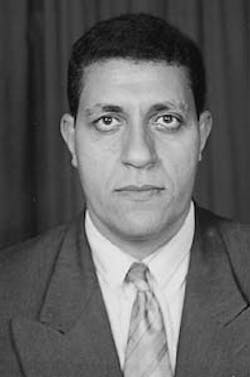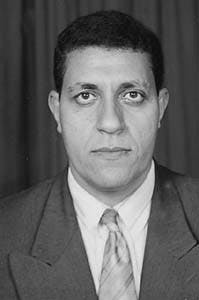New gas pseudocritical property equations developed
Khaled A. Abd-El FattahNew equations have been developed for calculating natural gas pseudocritical temperature and pressure over a wider range of gas specific gravities than previously published equations.
Cairo University Giza, Egypt
Both pseudocritical temperature and pressure are required for many gas calculations. If the gas specific gravity is known, one can use correlations for estimating these parameters whenever field or laboratory measurements are unavailable.
The new equations apply for gas with a specific gravity of 0.55-1.2.
Calculations
A natural gas compressibility factor is required for calculating gas volume, density, and viscosity at elevated pressures and temperatures. After obtaining these values, one can determine such quantities as gas reserves, pressure drop of gas flow through pipe, static pressure gradients in gas wells, and production rates.For most engineering purposes, the concept of pseudoreduced pressure and pseudoreduced temperature for various gas compositions allows one to calculate natural gas compressibility factors with sufficient accuracy.
For gas mixtures, pseudocritical pressure, Ppc, and temperature, Tpc, can replace critical pressure and temperature.
The pseudocritical values provide a means for correlating gas mixture properties applicable to the principle of corresponding states.
If measured natural gas properties are unavailable, one can obtain a Ppc, and Tpc, based on the specific gravity of the gas.
Brown, et al.,1 proposed a graphical method, depending on the existing data, for a convenient approximation of Ppc and Tpc of gas when only the gas specific gravity is available. Note, the specific gravity-based pseudocritical calculations apply for gas that contains only small amounts, less than 5%, of nonhydrocarbons.
Evaluation
Because many published equations1-16 exist for calculating Ppc and Tpc, this work aims at developing equations that have wider applications without decreasing the required accuracy.The equation box lists the published equations.
For the evaluation, all available data were collected from the various published sources, References 1-16. A Fortran program was written for solving these equations.
The program generated an average 400 points from each equation for gas with specific gravities ranging from 0.55 to 1.2, in 0.5-step increments.
The curve fitting included all data points in each data set. A nonlinear regression method was used to formulate the new equations (Equations 1 and 2).
Equation 316 tested the correlation coefficient, which represents the degree of success in reducing the standard deviation by regression analysis.
Equations 4 and 5 were used to calculate the values for the correlation coefficient factors for the new equations.
Because the R values are close to 1, this indicates that the equations are sufficiently accurate.
Figs. 1 and 2 [34148 bytes] illustrate the close fit of the calculated and reported pseudocritical pressure and temperature.
For gas with a specific gravity above 1.0, the model indicated a pseudocritical pressure difference of 5 psia.
This work shows that the pseudocritical properties can be represented by unique equations as a function of gas gravity. Developed equations are suitable for natural gas mixtures and provide more accurate and reliable results for a wide range of specific gravity.
References
- Brown, G.G., et al., "Natural Gasoline and the volatile Hydrocarbon," NGAA, 1948.
- Agarwal, B., "Spreadsheet program file quickly evaluates gas properties," OGJ, Oct. 18, 1993, p. 52.
- Beggs, H.D., Gas Production Operations, Second Edition, OGCI Petroleum Series, 1974.
- Campbell, J.M., Gas Conditioning and Processing, Third Edition, Campbell Petroleum Series, 1974.
- Dempsey, J.K., "Computer routine treats gas viscosity as a variable," OGJ, Aug. 16, 1965, p. 141.
- Hall, K.R., and Yarborough, L., "How to solve equation of state for Z factors," OGJ, Feb. 18, 1974.
- Horne, R.N., Modern Well Test Analysis, Petoway Inc., Bautista, 1990.
- Katz, D.L., and Lee, R.I., Natural Gas Engineering, McGraw Hill, 1990.
- Kumar, S., Gas Production Engineering, Gulf Publishing, 1987.
- Saleh, A.M., Evaluation of Empirically Derived PVT Properties of Egyptian Oils, MS thesis, Cairo University, 1986.
- Slider, H.C., Worldwide Practical Petroleum Reservoir Engineering Methods, PennWell Publishing, 1983.
- Standing, M.B., "Volumetric and Phase Behavior of Oil Field Hydrocarbon Systems," SPE, 1977.
- Standing, M.B., "Oil-System Correlation," Petroleum Production Handbook, McGraw Hill, 1962.
- Sutton, R.R., "Compressibility Factors for High-Molecular Weight Reservoir Gases," Paper No. SPE14265, SPE Annual Technical Meeting and Exhibition, Las Vegas, September 1985.
- Timmerman, E.H., Practical Reservoir Engineering, Vol. 1, PennWell Publishing, 1982.
- Walpole, R.E., and Myers, R.H., Probability and Statistics for Engineers and Scientists, McMillian Publishing, 1985.
Bibliography
- Al-Marhoun, M.A., "PVT Correlations for Middle East Crude Oils," JPT, May 1988, p. 650.
- Nind, T.E.W., Hydrocarbon Reservoir and Well Performance, Chapman & Hall, 1989.
- Tarek, A., Hydrocarbon Phase Behavoir, Gulf Publishing, 1989.
- Thomas, L.K., Hankinson, R.W., and Phillips, K.A., "Determination of Caustic Velocities for Natural Gas," JPT, July 1970, p. 889.
The Author
Khaled A. Abd-El Fattah is an assistant professor of petroleum engineering at Cairo University in Giza, Egypt. He has a BS, MS, and PhD in petroleum engineering from Cairo University.
Copyright 1997 Oil & Gas Journal. All Rights Reserved.

